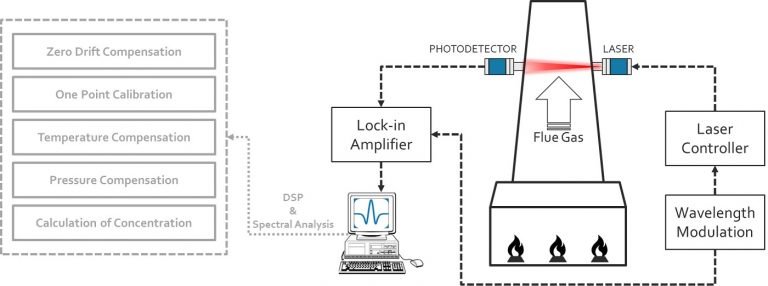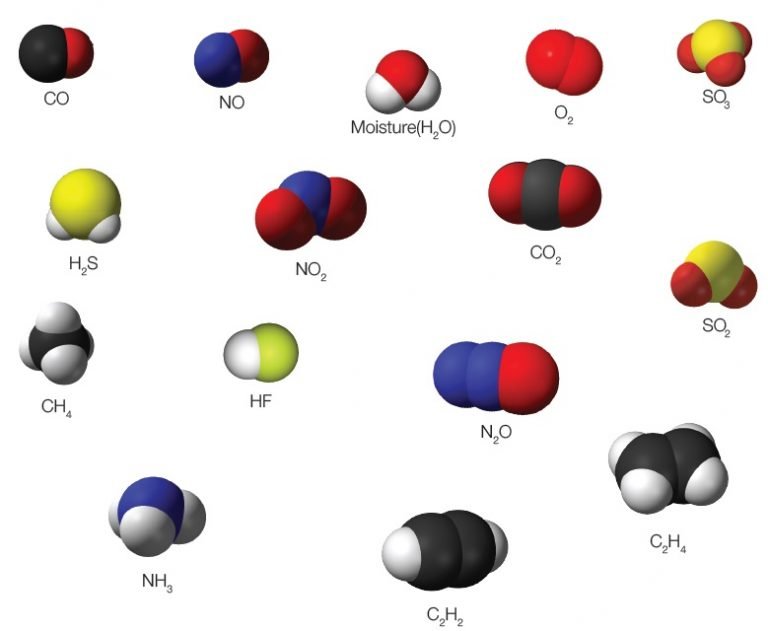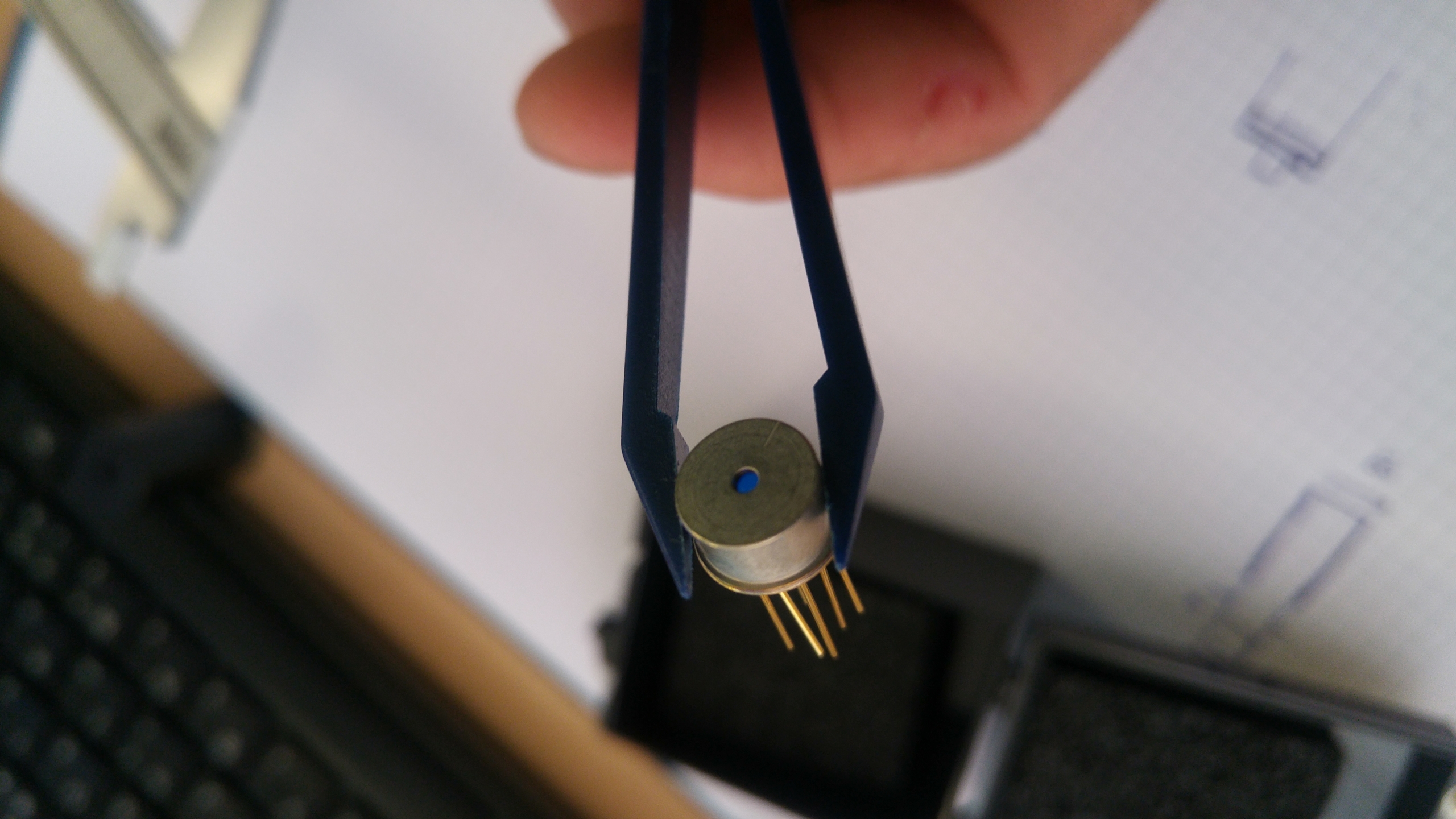HOW QS9000-TDLAS WORKS
HOW QS9000-TDLAS WORKS
QS9000-TDLAS analyzer series use infrared telecommunication grade diode lasers to obtain the gas concentration. As shown in Figure 1, the laser beam passes through the gas and then hits a photodetector. The laser wavelength is tuned to one of the absorption lines of the molecule of interest and scanned across it. The molecules absorb the laser photons and their concentration can be calculated from the absorption data measured by the photodiode.
This well-proven technology is known as Tunable Diode Laser Absorption Spectroscopy (TDLAS). QS9000-TDLAS series also use Wavelength Modulation Spectroscopy (WMS) and Digital Signal Processing (DSP) techniques along with the quantum mechanical spectral analysis to improve the measurements for harsh industrial environments. Temperature, pressure and zero drift are compensated through these analyses and the calculations are validated using an internal calibration algorithm.

Figure 1: Schematic diagram of a QS9000-TDLAS gas analyzer installed on a stack. The laser passes through the stack flue gas and the photodetector measures the absorption of the laser light in the gaseous molecules. The concentration of the molecule can be extracted from the recorded absorption spectrum. The “Wavelength Modulation” and “Lock-in Amplifier” units are used to apply the Wavelength Modulation Spectroscopy (WMS) technique. Digital Signal Processing (DSP) and quantum mechanical spectral analysis are implemented in the processing unit (computer) to ensure reliable and accurate data with no/low zero drift.
SPECIES THAT CAN BE MEASURED WITH TDLAS
SPECIES THAT CAN BE MEASURED WITH TDLAS


